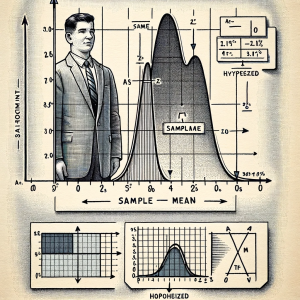
Here are two different methods of calculating t-statistics for one-sample t-test. In method 1, you enter the dataset. In method 2, you provide the sample mean, sample standard deviation and sample size. Here are the common set of inputs.
One of the input field is the hypothesized mean, which is the population mean you expect or hypothesizes before conducting the test. This value is crucial for comparison against the sample mean. By default, it is set to 0, but you can modify it based on their hypothesis.
The significance level, another critical input, is pre-set at 0.05 but can be adjusted. This level determines the threshold for statistical significance. In hypothesis testing, if the p-value calculated from the test is less than the significance level, the null hypothesis (which posits that there is no significant difference between the sample mean and the hypothesized mean) is rejected.
Select the type of test: two-tailed or one-tailed. This choice depends on the nature of the hypothesis. A two-tailed test is used when you are interested in any significant difference (greater or lesser) between the sample and hypothesized means. In contrast, a one-tailed test is selected when the interest lies in a specific direction (either greater or lesser).
One-Sample T-Test’s T-Statistics Calculator (Method 1)
In this method, the process of conducting a one-sample t-test using the following one-sample t-test calculator form, you begin by entering a series of data points, separated by commas, into the first input field. This data represents the sample from which the mean will be calculated.
Upon submitting the form, the t-statistics is conducted based on these inputs. Steps are recommended for you to arrive at p-value based on t-distribution table.
One-Sample T-Test’s T-Statistics Calculator (Method 2)
Here is another method to calculate t-statistics when sample mean, sample size and sample standard deviation are known.
- Coefficient of Variation in Regression Modelling: Example - November 9, 2025
- Chunking Strategies for RAG with Examples - November 2, 2025
- RAG Pipeline: 6 Steps for Creating Naive RAG App - November 1, 2025
I found it very helpful. However the differences are not too understandable for me